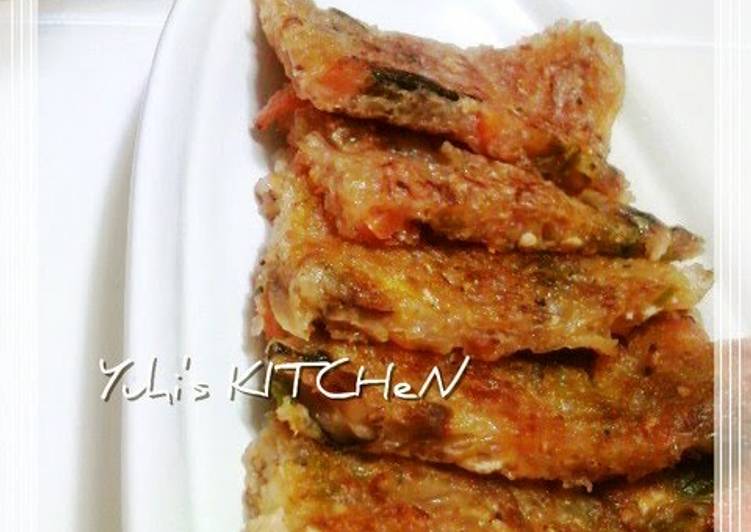Transform Japchae into Chijimi. If the japchae has cooled into a clump, lightly microwave it to loosen up the noodles. Japchae (잡채) literally means "mixed vegetables." But the main ingredient of this classic dish is Korean sweet potato starch noodles (dangmyeon), also I make this dish by separately cooking each ingredient and then combine everything at the end into a deliciously colorful dish. This chijimi recipe is like a spicier type of okonomiyaki recipe, made with kimuchi (kimchi) cabbage, sweet rice flour, and various savoury fillings.
 Japchae (잡채; 雜菜) is a sweet and savory dish of stir-fried glass noodles and vegetables that is popular in Korean cuisine. Japchae is typically prepared with dangmyeon (당면, 唐麵), a type of cellophane noodles made from sweet potato starch; the noodles are topped with assorted vegetables. Japchae, this easy Korean noodle stir-fry recipe, is quick and easy to make, it's full of veggies (red peppers, carrots, onions, mushrooms, spinach), and tossed in the most delicious sesame-soy-maple sauce. You can have Transform Japchae into Chijimi using 8 ingredients and 4 steps. Here is how you cook that.
Japchae (잡채; 雜菜) is a sweet and savory dish of stir-fried glass noodles and vegetables that is popular in Korean cuisine. Japchae is typically prepared with dangmyeon (당면, 唐麵), a type of cellophane noodles made from sweet potato starch; the noodles are topped with assorted vegetables. Japchae, this easy Korean noodle stir-fry recipe, is quick and easy to make, it's full of veggies (red peppers, carrots, onions, mushrooms, spinach), and tossed in the most delicious sesame-soy-maple sauce. You can have Transform Japchae into Chijimi using 8 ingredients and 4 steps. Here is how you cook that.
Ingredients of Transform Japchae into Chijimi
- It's 200 grams of Japchae or stir-fried cellophane noodles.
- It's of For the batter:.
- Prepare 100 ml of ● Water.
- It's 5 tbsp of ● Cake flour.
- You need 1 tbsp of ● Katakuriko.
- You need 1 of packet ● Bonito flakes.
- You need 1 tbsp of ● Toasted sesame seeds.
- It's 1 of ● Black pepper.
Feel free to make your japchae recipe with steak, chicken, pork, shrimp, tofu or veggies-only. Asian chives, beef, chicken, dried red chili pepper, garlic, ginger, green chili pepper, green onion, ground black pepper, king oyster mushrooms, onion, oyster sauce, pork belly, potato starch, red chili pepper, salt, sesame oil, soy sauce, vegetable oil. Indian man turns into a tank. Japchae, a traditional Korean dish, made with sweet potato noodles, beef, and vegetables stir-fried in a sesame oil-based sauce is a delicious and colorful meal.
Transform Japchae into Chijimi step by step
- If the japchae has cooled into a clump, lightly microwave it to loosen up the noodles. Cut the noodles into 1-2 cm lengths. I recommend using scissors to avoid dirtying your cutting board..
- Combine the ● ingredients in a bowl, then mix in the japchae from Step 1. Pour a generous amount of sesame oil into a frying pan, then spread the mixture out into a very thin pancake. Fry both sides until golden brown, then serve..
- It tastes good as-is, but I recommend serving it with mayonnaise if you're using japchae leftovers If you're using stir-fried cellophane noodle leftovers, since flavorings vary, use your choice of sauce..
- This is the recipe I used for making japchae. Even without meat, this japchae is delicious. https://cookpad.com/us/recipes/156606-hearty-but-meat-free-japchae-with-atsuage.
The Japchae was delicious but seemed to be lacking something as the flavor was very subtle. (Most likely due to missing onions though as that's. I've redone my Japchae, Korean Glass Noodles recipe! I'm still making my japchae exactly Only thing I'm doing differently now is just tossing the egg omelet into the noodles, instead of using as garnish. It's definitely one of my signature menu. A misconception is held that Japanese script reform originated from the Supreme Commander of the Allied Powers during the Occupation of Japan, but in fact, a plan had already been put into place prior to the occupation.
Post a Comment
Post a Comment